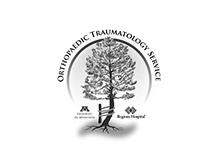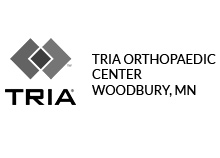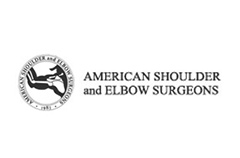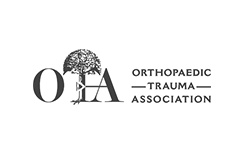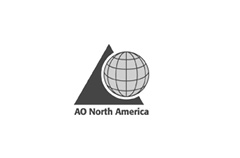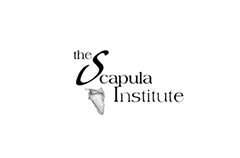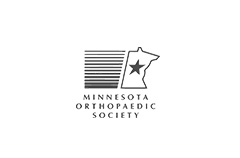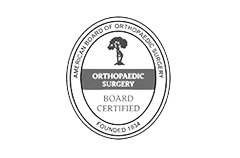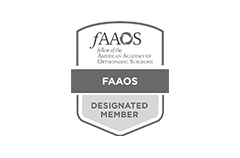Pectoralis Tendon Tears
- Diagnosis
- Non-operative Options
- Operative Options
- Before Your Surgery
- After Your Surgery
- Your Rehab
What is the Pectoralis Major Muscle?
The pectoralis muscle is a large fan-shaped muscle comprising the pectoralis major and pectoralis minor muscles that stretch from the armpit to the collarbone and down across the lower chest region on both sides of the chest. The two sides of the chest connect at the breastbone or sternum. The pectoralis major is a powerful muscle that aids in rotating the arm inward and moving it closer to the body. The pectoralis muscles connect the chest wall with the humerus (upper arm bone) and shoulder. The pectoralis major moves each shoulder joint in four distinct directions and also keeps the arms attached to the body. It is best known as the muscle that you develop with bench press exercises.
What are Pectoralis Major Tears?
A tear in the pectoralis major muscle occurs when the tendon attaching the muscle to the upper arm bone is damaged as a result of trauma or injury. In the case of a rupture, operative treatment is employed for repairing the torn muscle in active and young patients irrespective of the chronicity of the injury. The most commonly used techniques to repair a pectoralis major tear are suture anchors and bone tunnel procedures.
Causes of Pectoralis Major Tears
Pectoralis muscle tears occur when a force goes through the muscle and tendon that is greater than they can withstand. This can happen during weight training, such as with bench press, chest press, pectoral fly, or even contact sports.
Other common causes of pectoralis major tears include:
- Strain due to prolonged or repetitive activity
- Degeneration of pectoralis major muscles
- Abnormal biomechanics
- Chronic muscle imbalances
- Muscle tightness
- Muscle weakness
- Excessive training
Symptoms of Pectoralis Major Tears
Symptoms commonly noted with pectoralis major muscle tears include:
- Bruising in the arm and chest
- Pain in the upper arm and chest
- Deformity of the upper arm and chest
- Weakness or loss of strength
- Swelling around the affected muscle
- Dimpling or pocket formation around the armpit
Diagnosis
Diagnosis of pectoralis muscle tears can often be made through a physical examination and the changes indicating a muscle tear or rupture include:
- Change in shape and muscle bulk on the chest wall on the injured side when compared with the normal side
- Bruising on the chest wall indicating a tear
- Pain and discomfort when attempting to rotate the arm
- Visible decrease in muscle mass
Imaging such as X-rays, MRI, and ultrasound are used to determine and differentiate the extent and type of pectoralis injury and disorders and confirm the diagnosis.
Treatment for Pectoralis Major Tears
The management of pectoralis major tears comprises non-surgical and surgical methods. The choice of treatment depends upon the type and severity of the injury, the extent of muscle function, and the patient’s general health and activity level.
Non-surgical treatment is employed for patients with partial tears, rupture within the muscles, and elderly and low-demand patients. Nonsurgical management would include rest, cold therapy, immobilization, NSAIDs along with physical therapy for stretching and muscle strengthening.
Surgical repair is employed for patients with complete tears of the pectoralis muscle tendon and who either need to return to full strength and function as in sports or are concerned with cosmetic appearance.
The surgery is performed in the operating room under anesthesia in a supine position. A small incision is made on the upper arm where the tendon attaches. The torn tendon is identified and released from all adhesions to make room for sufficient mobilization required for anatomic reapproximation of the muscle. Your surgeon reattaches the torn muscle and tendon to the humerus (upper arm bone) utilizing anchors and strong sutures. Your surgeon then closes the incision by suturing or staples and covers with sterile dressings to complete the operation.
Postoperative Care
Post surgery, the arm will be rested in a broad arm sling for at least 6 weeks. Gentle pendulum exercises will be initiated during this juncture. This will be gradually followed by rehabilitation program culminating in exercises against resistance, and light weight lifting will be encouraged at 4 months. Post 6 months, patients typically will be able to return to competitive activity. Instructions on surgical site care as well as follow-up appointments will be given.
Risks and Complications of Repair Surgery
As with any surgery, some of the potential risks and complications of pectoralis major repair may include:
- Bleeding or hematoma
- Superficial or deep Infection
- Post-op stiffness
- Damage to neurovascular structures
- Incarceration of the biceps
- Anesthetic reactions
- Failure to heal and the need for repeat surgery
- Re-rupture of muscles
- Blood clots

Once you and your doctor decide that surgery will help you, you will need to learn what to expect from the surgery and how to actively participate in the treatment plan for the best results afterward.
Preparing mentally and physically for surgery is an important step toward a successful result. Understanding the process, and your role in it, will help you recover more quickly and have fewer problems.
Before surgery, your doctor will perform a complete physical examination to make sure you don’t have any conditions that could interfere with the surgery or the outcomes.
- Routine tests, such as blood tests and X-rays may be performed.
- Discuss any medications you are taking with your doctor as you may have to stop or alter your intake before surgery. If you are taking aspirin or anti-inflammatory medications or any drugs that increase the risk of bleeding, you will need to stop taking them one week before surgery to minimize bleeding.
- Discuss with your doctor about preparing for potential blood replacement, medical interventions and other treatments prior to surgery.
- Report any infections to your surgeon. Surgery cannot be performed until all infections have cleared up.
- If you smoke, you should stop or cut down as smoking interferes with wound healing and can affect your recovery.
- Have someone available to take you home, as driving is not recommended for at least 24 hours or as advised.
- You may need help with everyday tasks such as cooking, shopping and laundry.
- Put items that you use often within easy reach, so you won’t have to stretch and bend as often.
- After Surgery Video
- Shoulder Surgery Recovery Video
- Physical Therapy Intro Video
- Finger ROM Video
- Standard Elbow ROM Video
- Shoulder ROM Video








